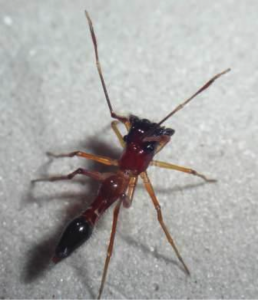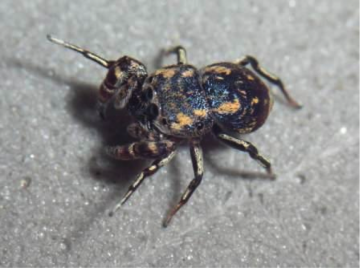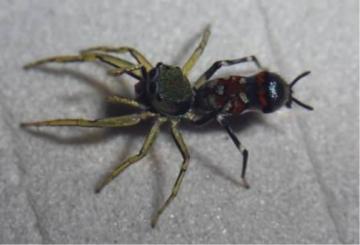With the field work done, our attention turns to handling all of the specimens. We have barely had time to glance at most of them. My curiosity to peruse them under a microscope is strong, as I want to figure out what we got, but that will have to wait until after we get home to the lab in Canada. Indeed, it will have to wait longer than that, as it will take weeks to properly sort and label the specimens. Patience, Wayne.
In the meantime, there is the preparation of the specimens for the flight home. After we catch the specimens, we preserve them that day in 95% ethanol. Traditionally spiders were preserved in 80% ethanol, which is better for studying their body structures (95% makes them brittle and prone to break), but 95% is much better for preserving DNA for modern phylogenetic analysis. Ethanol of that percentage is flammable and a problem to take on airplanes, which means that our primary preparation for travel is to drain the ethanol from the hundreds of vials. The specimens stay just wet enough to stay in good condition, and we’ll refill the ethanol right after arriving home.
Going through the vials, draining each one, gives me time to recall some of the amazing species we found. Some, strangely, look and act as if they were something other than jumping spiders. I have posted photos of some of the ant-like salticids already, but I want to show you one more. This is Agorius, a jumping spider that has its body constricted is several places, like extra waists. This makes its body appear to be divided like an ant’s body. It also holds its first legs up as if they were an ant’s antennae.

Agorius
Some spiders look like beetles. Here’s one we haven’t yet identified, though we think it is near Ligurra and Simaetha. She’s got a stout body with a blue sheen, and she holds up her second pair of legs, perhaps to appear as antennae. Alex suggested she looks like a weevil, with the front legs held like the snout projecting in front of the antennae.

A beetle-like salticid
But perhaps the most surprising is Orsima. Back in the 1970′s, Jonathan Reiskind described its peculiar appearance and behavior: he noted that the back end of the spider looks like the head of an insect. The abdomen has a constriction, as if the neck of the insect, while the spinnerets –the little appendages spiders use to make silk — are held and jiggled as if they were the antennae and mouthparts of the insect’s head. The spider raises and lowers the abdomen rhythmically, and all in all it’s rather hypnotic to watch.

Orsima
Now, I’m sure that natural selection led these salticids to appear to be things other than salticids. But, in my opinion, salticids look just fine as salticids.
